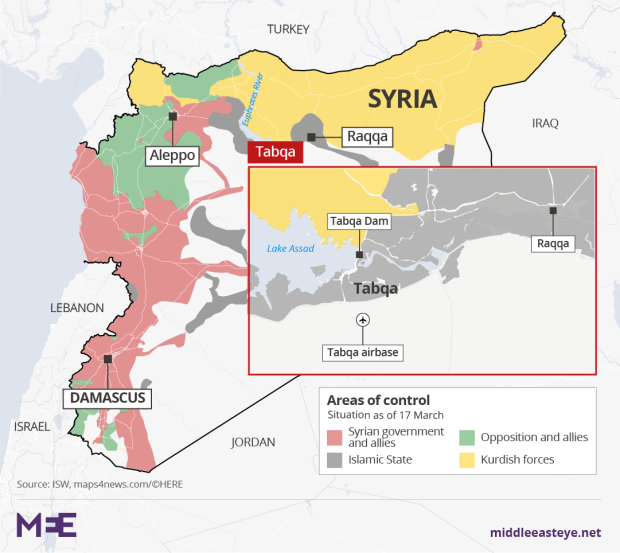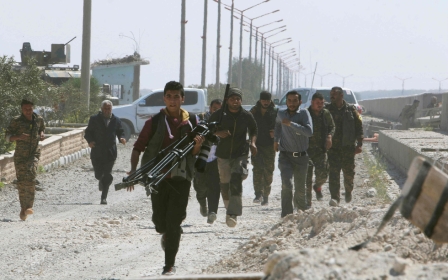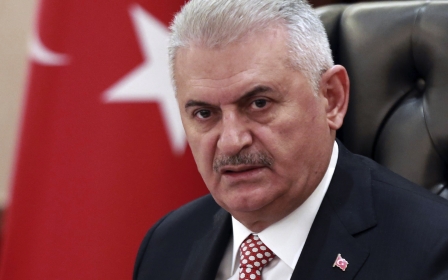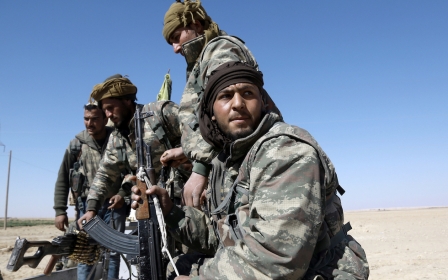Islamic State makes its last dam stand

It could be a quick victory with Islamic State (IS) forces yet again being forced to retreat. Or it could unleash a humanitarian and environmental catastrophe, with a wall of water more than 50 metres high killing thousands of people.
Over recent days, fighting between IS and forces of the Syrian Democratic Forces (SDF) - a Kurdish/Arab alliance backed up by the US military - has been intense around Tabqa, site of Syria’s largest dam and one of the country’s most important air bases.
It’s unclear at present who controls what, but it’s vital that the SDF and Americans win the battle for the dam quickly – at a maximum within the next four weeks
Last weekend, the SDF gained control of the airbase and its forces were reported to be advancing on the nearby city of Al-Thawra – formerly Al-Tabqa - and on the dam complex itself.
But reports have been highly confusing and often contradictory with Kurdish news outlets saying the dam is already completely under SDF control while others insist IS is still in command.
“It’s unclear at present who controls what, but it’s vital that the SDF and the Americans win the battle for the dam quickly – at a maximum within the next four weeks,” says Tobias von Lossow, a specialist on water issues in the Middle East at the German Institute for International and Security Affairs (SWP).
“We don’t know what caused it, but one of the control towers at the dam has been badly damaged by fire,” says von Lossow.“As the fighting intensifies, less maintenance work is being carried out. Meanwhile, the lake behind the dam is already nearly full and will fill up more as water flows from further upstream, over the border in Turkey, peak over the next month.
“The longer the battle for the dam goes on, the more the likelihood of it being breached, whether as a consequences of a stray US bomb, by inadequate maintenance or by IS itself. The consequences of such an event are immense – the city of Raqqa and towns and villages downstream would be submerged within minutes and the flooding would continue on into Iraq.”
Under IS control since 2014
In recent days, IS has been making various statements about the condition of the dam.
At one stage, both the Syrian government and IS said the dam had been badly damaged as a result of US air strikes. This was followed by reports of people panicking and making efforts to leave the IS stronghold of Raqqa, 40 kilometres east of Tabqa.
For its part, the US and Kurdish forces have denied the dam has been damaged though news agencies say the main control room at the complex has been out of action for three days and, at one stage, there was a pause in fighting to allow engineers to inspect the facility.
The Tabqa dam, also known as the Euphrates dam, was built with engineering and financial help from what was then the Soviet Union in the late 1960s and early 1970s.
The dam is more than four kilometres long and 60 metres high. Designed to provide water and electricity to a large portion of Syria’s population, Tabqa has never been able to fulfill its operational targets.
Lake Assad – renamed Revolution Lake by Google in 2014 – which feeds the dam, covers nearly 250 square miles. More than 4,000 families had to be moved when the lake was formed.
IS has controlled the Tabqa dam since 2014. While it has lost its command of much of the land along the shores of Lake Assad, it’s believed a group of between 400 and 500 hardened fighters are in and around the dam complex.
There have been reports that several senior figures in the IS hierarchy, along with high-profile hostages, are holed up in and around the dam.
“As a final desperate measure, ISIS might use the dam as a weapon and breach it but then the group’s path of retreat, down the Euphrates, would be blocked. Any breach would also destroy the smaller Baath dam, 18 kilometres down river from Tabqa.
“It’s interesting that ISIS has been blaming damage at the dam on US air strikes – perhaps it's seeking to deflect the blame if anything does go seriously wrong.”
At one stage, IS had control of several dams both in Syria and Iraq, including the Mosul dam on the river Tigris, Iraq’s biggest such facility. This gave the group enormous influence, allowing it to regulate both water and electricity supplies over vast swathes of territory.
IS has now lost control of all the dams it once held in Iraq, with the Tabqa and Baath dams in Syria – for now – the only ones left under its command.
- Kieran Cooke is a former foreign correspondent for the BBC and the Financial Times, and continues to contribute to the BBC and a wide range of international newspapers and radio networks.
The views expressed in this article belong to the author and do not necessarily reflect the editorial policy of Middle East Eye.
Photo: An SDF fighter near the Euphrates River in Syria earlier this month (Reuters)
This article is available in French on Middle East Eye French edition.
New MEE newsletter: Jerusalem Dispatch
Sign up to get the latest insights and analysis on Israel-Palestine, alongside Turkey Unpacked and other MEE newsletters
Middle East Eye delivers independent and unrivalled coverage and analysis of the Middle East, North Africa and beyond. To learn more about republishing this content and the associated fees, please fill out this form. More about MEE can be found here.








